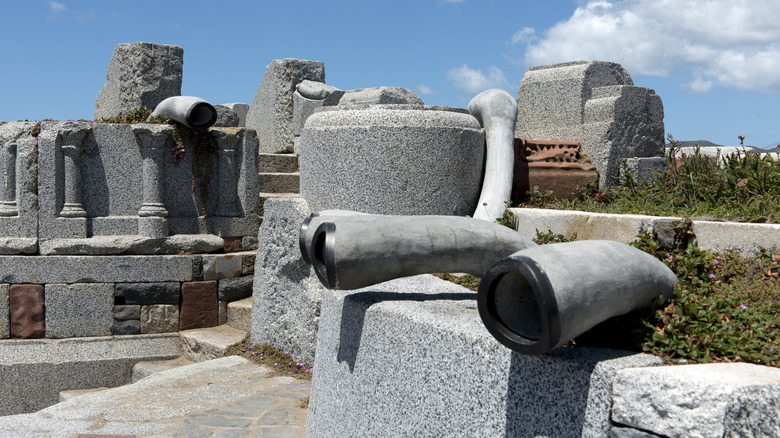California's Acoustic Sculpture On The San Francisco Bay Transforms Crashing Waves Into Eerie, Melodic Sounds
As mesmerizing as the ocean is, the tides can be dangerous, requiring swimmers to be able to recognize the most dangerous types of waves to stay safe. Still, one can easily spend hours watching the waves crash into their surroundings. Now, picture that scene, except with every resounding impact, you hear an eerie, otherworldly tune. The sound doesn't come from sea creatures but from an acoustic sculpture that takes the pounding waters and turns them into musical notes. If you think this is all too imaginative, the Wave Organ in San Francisco begs to differ. This wave-activated device is one of the most unique attractions in the Bay Area, along with the historic, ocean-fed Sutro Baths.
Two masterminds are behind the Wave Organ: artist Peter Richards and sculptor George Gonzalez. Inspired by Bill Fontana's "Floating Echoes" art project, which involved recording environmental echoes coming from a floating dock's venting system in Australia, Richards began working on his own soundscape idea. After receiving a grant that greenlit the project, he sought George Gonzalez's expertise to install the composition. He constructed a rough prototype first before the final execution. Built in the span of six months, the Wave Organ made its debut in May 1986.
Locals and tourists who wish to hear the sound of the ocean make their way to San Francisco's Marina District to relish the deep rumbles. The Wave Organ is situated on a jetty not far from the Golden Gate Bridge. It's a 15-minute stroll from the Palace of Fine Arts and a 30-minute walk from Fort Mason Park. You can easily squeeze in visiting the Wave Organ and San Francisco's iconic waterfront Ferry Building into the same day.
How the Wave Organ works and when to visit it
The Wave Organ consists of 25 pipes — constructed of concrete and PVC — in a range of sizes and positioned at multiple levels. The pipes themselves are a kitschy work of art; you'll notice them scattered all over the jetty, so that the music can pour in from every angle.
With every crashing wave, saltwater enters the pipes, producing a sound. Since there are air columns within the pipes, that sound varies every time, depending on how much water gets in them. Each wave delivers a different volume of water, which both decreases and increases the air columns' lengths. This is what causes the sounds to have shifting pitches. Basically, greater air volume is associated with lower pitch. On the other hand, the sound has a higher frequency when the air volume is smaller. Sometimes, you'll hear soft muffled noises, while other times, the pulsating vibrations are hard to ignore. The best way to describe the enigmatic commotion is like holding a giant conch to your ear, trying to listen to the ocean.
The best time to experience the haunting acoustics of the Wave Organ is during high tide when the currents are strong. Even at low tide, you can admire the disorganized pipes that make the jetty look like an industrial sculpture park. The vistas of the bay alone are worth making the trip to the Wave Organ — try to check the tide charts during sunrise or the golden hour for the most striking views. As you're soaking in the melodies, take a moment to look at Angel Island in the distance, which is the largest of its kind in San Francisco Bay.

